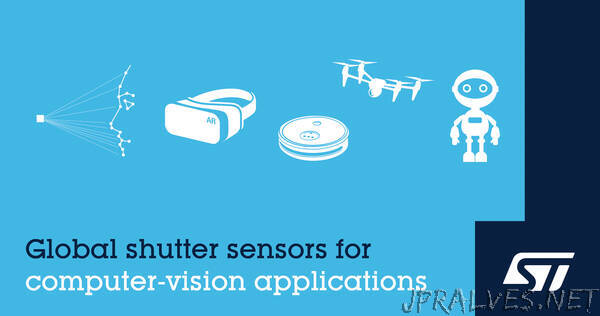
“STMicroelectronics (NYSE: STM), a global semiconductor leader serving customers across the spectrum of electronics applications, is enabling the next generation of smart computer-vision applications with new high-speed image sensors that use “global shutter” – the preferred mode for capturing distortion-free images when the scene is moving or when near-infrared illumination is needed.
ST’s advanced image-sensor process technologies enable class-leading pixel size while offering both high sensitivity and low crosstalk. The combination of silicon process innovation and advanced pixel architecture allows a smaller sensor pixel array on the top die, while keeping more silicon area on the bottom die to increase digital-processing capabilities and features.
The new sensors are the VD55G0 with 640 x 600 pixels and the VD56G3 with 1.5 Mpixels (1124 x 1364). Measuring 2.6mm x 2.5mm and 3.6mm x 4.3mm, respectively, VD55G0 and VD56G3 are the smallest on the market in relation to resolution. Low pixel-to-pixel crosstalk at all wavelengths, specifically near-infrared, ensures high contrast for superior image clarity. Embedded optical-flow processing in the VD56G3 calculates movement vectors, without the need for host computer processing. These new sensors are ideally suited to a wide range of applications including Augmented and Virtual Reality (AR/VR), Simultaneous Localization and Mapping (SLAM), and 3D scanning.
“These new global shutter image sensors are based on our third generation of advanced pixel technology and deliver significant improvements in performance, size, and system integration,” said Eric Aussedat, Imaging Sub-Group General Manager and Executive Vice President of the Analog, MEMS and Sensors Group, STMicroelectronics. “They are enabling another step forward in computer-vision applications, empowering designers to create tomorrow’s smart, autonomous industrial and consumer devices.””
